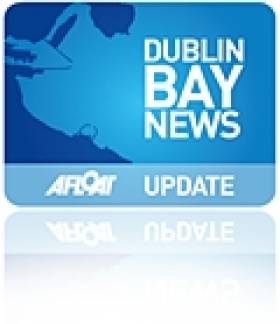Displaying items by tag: Catalina flyingboat
Retiring L.E. Emer to Launch Flight Fest Spectacular Featuring Marine-Related Aircraft
#FlightFest – L.E. Emer (P21) as previously reported will officially launch tomorrow's Flight Fest spectacular above Dublin Port and she will be open to public tours before retiring with less than a week to go, writes Jehan Ashmore.
The eldest member of the Naval Service fleet is berthed at North Wall Quay which is downriver from the Samuel Beckett swing-bridge which will not be accessible for vehicles but kept open to plane-watchers.
Organisers of the festival involving street events starting 12 noon, suggest the best vantage points to view more than 30 aircraft in the flyover (13.50hrs-17.00hrs) are along both sides of the Liffey quays of the city-centre 'Docklands' quarter.
The quays will be pedestrianised between Custom's House Quay to the East Link Toll Bridge on the northside, and from Georges Quay to the end of Sir John Rogerson's Quay on the southside.
The impressive 'Gathering' of aircraft include planes representing each decade stretching back to the 1930' s. They are to be flown at a mere 800 feet (rather than the norm of 1,700 feet) as they approach on a special flight-path corridor than runs on a East-West direction, i.e. from Dublin Bay and over the port entrance and city-centre.
Among the great line up of historic World War II aircraft will be a Catalina flying boat that served from Lough Erne in Co. Fermanagh.
In addition the Aer Corps CASA patrol craft of the Marine Squadron, that monitors fishing vessel activity and where information is relayed to Naval Service headquarters at Haulbowline, Cork Harbour.
The Naval Base is where the L.E. Emer will be arriving next Friday on completion of carrying out her final patrol duties. She is to be de-commissioned and put up for public auction next month.
The FlightFest will also feature the important role of the Irish Coast Guard's life-saving helicopters of the Sikorsky S61 and S92 designs.
For a complete list of the flyover involving aircraft from civil, private and the military and notably the giant Airbus A380 from British Airways, visit this link For general information visit: http://flightfest.ie/faqs























